 Former Providence mayor Joseph Paolino’s media blitz around homelessness should be taken with a grain (or two, or three) of salt. In 2014, Paolino spoke with James Baar at The Projo (“The Seven Deadly Sins of Downtown Providence”, April 29, 2014) to outline his angst over panhandling homeless people and low income bus riders, suggesting a set of recommendations that show the casino magnate and parking lot landlord’s true political center. As I pointed out at the time and more recently, what really stretches credulity about Paolino’s 2014 proposals wasn’t simply their blithe disregard for the poor, but the barking way that Paolino assumed the city could just take up major new financial liabilities without any realistic stream of money to pay for them. With such extravagant ideas as removing Kennedy Plaza entirely, building a giant underground garage under it, and doubling the size of Burnside Park– all while policing the area to get rid of “vagrants” and completely banning potholes (Just “Do it!” yelled Paolino through the voice of Baar), you would think the city must be swimming in money. The kind of money that could, of course, help resolve the root causes of homelessness.
Former Providence mayor Joseph Paolino’s media blitz around homelessness should be taken with a grain (or two, or three) of salt. In 2014, Paolino spoke with James Baar at The Projo (“The Seven Deadly Sins of Downtown Providence”, April 29, 2014) to outline his angst over panhandling homeless people and low income bus riders, suggesting a set of recommendations that show the casino magnate and parking lot landlord’s true political center. As I pointed out at the time and more recently, what really stretches credulity about Paolino’s 2014 proposals wasn’t simply their blithe disregard for the poor, but the barking way that Paolino assumed the city could just take up major new financial liabilities without any realistic stream of money to pay for them. With such extravagant ideas as removing Kennedy Plaza entirely, building a giant underground garage under it, and doubling the size of Burnside Park– all while policing the area to get rid of “vagrants” and completely banning potholes (Just “Do it!” yelled Paolino through the voice of Baar), you would think the city must be swimming in money. The kind of money that could, of course, help resolve the root causes of homelessness.
The 2014 priorities listed by Paolino remain poor uses of city or state funding, but the former mayor’s softer tone on homelessness opens up an opportunity to hold his feet to the fire and demand some changes. Most recently, in an interview with The Projo’s Edward Fitzpatrick, Paolino says he wants the city to avoid the “Giuliani way” of removing homeless people, and look to root causes. Will Paolino stay true to his word?
Here are some things Paolino can back to show that he’s serious.
A parking lot tax, with a refund to housing costs
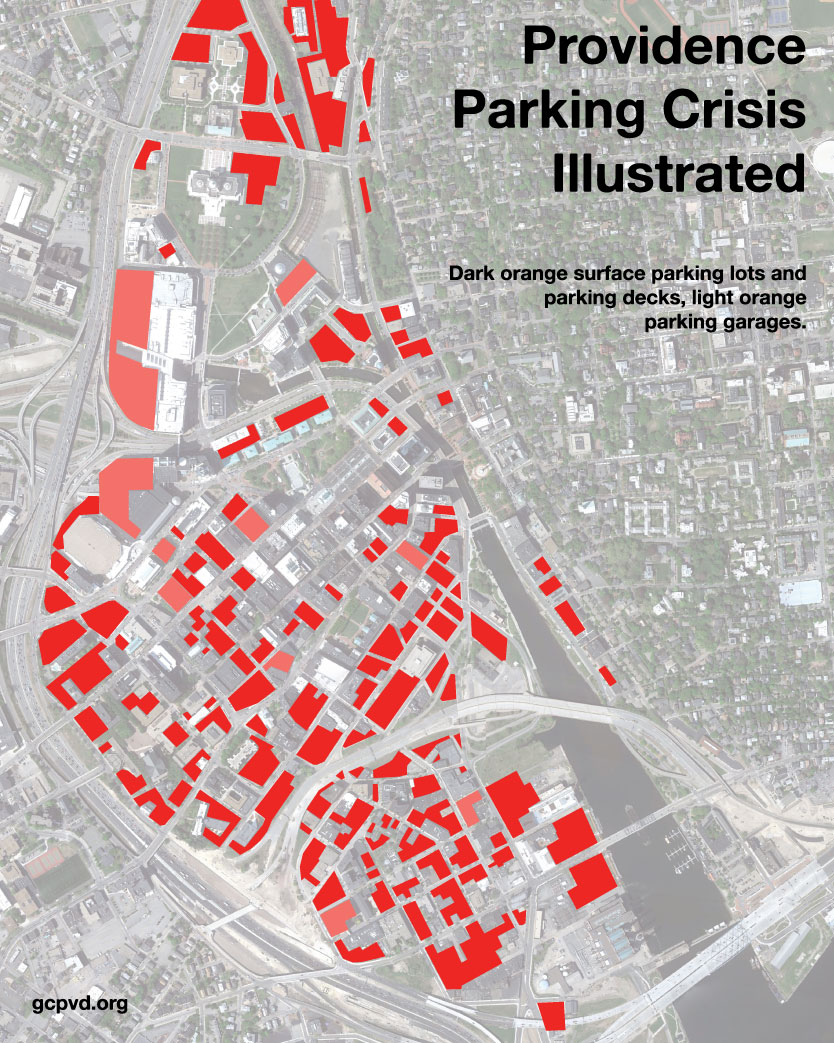
Paolino has large holdings in downtown parking lots. Essentially these are land speculation projects. It makes sense to hold onto prime land in the city, earning money off of commuters who park there, until a perfect skyscraper project comes along for those plots of land. Parking lots do pay property taxes, but because a surface lot is not valued highly, this gives speculators the best of all worlds– an easy short-term revenue stream, low taxes, and a lottery ticket that is likely to be worth a lot of money in the future.
I’ve argued in the past that putting a tax on surface parking would change the balance of this math. Land speculators like Paolino would be inclined to build something– anything– to hold the space until larger projects could come, instead of pimping parking lots. A developer may prefer a skyscraper, and in the long-run that may be the best thing for the city as well, but having rowhouses in the space while something else comes along means people have a place to live. As bigger projects form, the city could also require the continued tenancy of low income residents as part of mixed income development. This could itself help create more affordable housing. A tax on parking could and should also be refunded directly to properties adjacent to the parking, lowering the cost of business and residency in the city. Yet another way that this stream of revenue could considerably change the forecast for the poorest people would be if a portion of it was directly put towards housing vouchers for homeless individuals and families. Paolino has suggested that more money be put to shelters for homeless people, but what people truly need is permanent housing.
A parking lot tax would cost Paolino– he owns 11 lots. But if he’s serious about his statement that the business community needs to step up, endorsing this reform and pushing it through the business community would be one sincere step he could take.
Deregulation of single-family only zoning & parking minimums
Many Providence neighborhoods do not allow affordable housing, by law. The zoning code is full of arcane regulations designed to allow only what types of housing currently exist in a neighborhood. This is nothing like what happened in normal cities before the 1920s.
Providing affordable housing in Providence should partly be built around getting rid of some of these arcane rules.
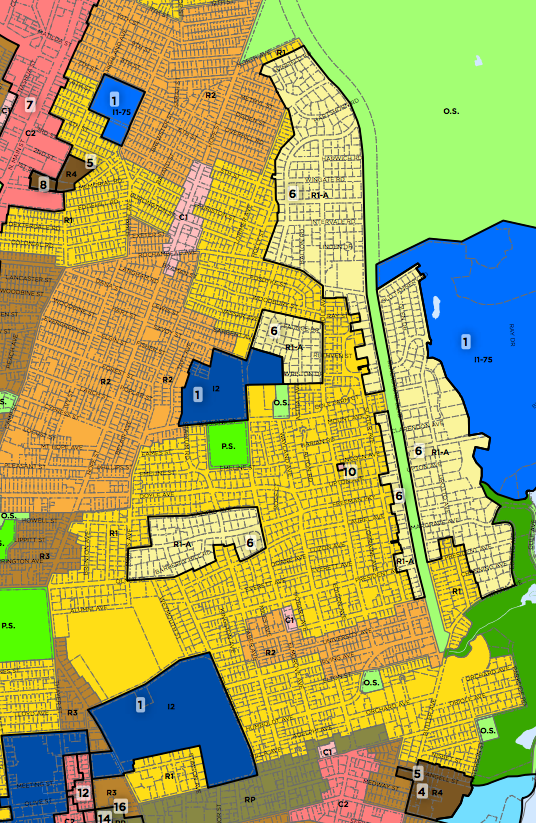
Parking minimums require that most residences have x number of parking spots per square foot of space. This both makes the housing itself more expensive, and also rules out building new housing on land that is taken up by parking.
Providence also has a number of neighborhoods that don’t allow anything but single-family homes. Sometimes these neighborhoods already have some houses that aren’t single-family, and they’ve been carved into the zoning as exceptions. The business community and city need to work together to eliminate zones like 1 & 1A, which don’t allow things like granny cottages, rowhouses, apartments, twins, duplexes, or triple-deckers. The business community and city also have to work together to end the practice of putting residency limits on students. Students bleed out into housing, making what affordable options that exist more expensive, and displacing people on the fringes of becoming homeless.
These are not issues that Paolino can be held accountable for, but in his new-found advocacy for the homeless, they should become centerpieces of policy change. Paolino should push zoning reform.
Transit at the center, not the fringes
While Paolino can’t be blamed for zoning, he can be held accountable for his long agitation against Kennedy Plaza as a bus hub. In 2014, as I stated, Paolino advocated for moving buses “to the fringes of the city” and getting rid of the bus hub entirely, to make it an underground parking garage.
People who become homeless often have serious problems that go beyond job access, but once they get on track, keeping a job is a very important stabilizing force. Transit is one of the most important ways to make sure that low-income people, who cannot afford cars, can have access to jobs.
I’ve had some online discussions with other transit advocates who point out that RIPTA should not be running all its routes through Kennedy Plaza. I agree with this criticism, and think we need an effort to put together a full network of bus routes like what Jarrett Walker designed in Houston, but I also think it’s clear this hasn’t been what Paolino meant in the past. Referring to buses as needing to be “at the fringes” is pretty clear about why the buses need to move– in this case, to take the sour image of poor people out of the downtown. Paolino’s business coalition needs to work to make transit a priority by spearheading efforts to give buses rights-of-way, improving frequencies of bus routes by funding RIPTA better, and updating the city’s poor pedestrian and bike layout to aid last-mile connections.
I’ve argued in the past that while there’s been a lot of action around maintaining free bus passes for elderly and disabled Rhode Islanders, that more attention needed to be put to making the bus system run efficiently and frequently (an argument I borrowed from Jarrett Walker as well). However, even in that piece, I argued that it was silly not to offer homeless people free rides on RIPTA. RIPTA has temporarily extended the free bus pass program pending funding, but business leaders like Paolino need to make RIPTA a long-term priority.
Supporting RIPTA, biking, and walking would be a big turnaround for Joe Paolino, but if he’s truly a reformed man with a vision to end the plight of the homeless, that would be what he needs to do.
And Scrooge was better than his word
I would be lying if I said that I trusted Joe Paolino’s softer messaging on panhandling in Kennedy Plaza. Over the years, many of Paolino’s priorities for the city have struck me as hostile to poor people and to non-drivers, couched in the kind of right-leaning identity politics one might associate more with Donald Trump than a former Democratic mayor of a blue-state city. But everyone can change. I will open my arms to Joe Paolino if he changes his ways. He needs to embrace the end of his parking empire as a way of speculating off of city land, support putting direct tax resources into more affordable housing, back zoning deregulation to stop the experiment of single-family-only neighborhoods, and back a robust RIPTA with bike and pedestrian infrastructure to support last-mile connections. His rhetoric has to move beyond temporary housing for homeless people, and towards permanent solutions.
As Charles Dickens would put it:
Scrooge was better than his word. He did it all, and infinitely more; and to Tiny Tim, who did not die, he was a second father. He became as good a friend, as good a master, and as good a man, as the good old city knew, or any other good old city, town, or borough, in the good old world. Some people laughed to see the alteration in him, but he let them laugh, and little heeded them; for he was wise enough to know that nothing ever happened on this globe, for good, at which some people did not have their fill of laughter in the outset; and knowing that such as these would be blind anyway, he thought it quite as well that they should wrinkle up their eyes in grins, as have the malady in less attractive forms. His own heart laughed: and that was quite enough for him.
God Bless Us Every One.
~~~~
]]>
If you want a say in what transportation projects will and won’t be completed in your community, then I’d like to tell you about RI’s new Transportation Improvement Program, or TIP. There have been some concerning changes in how the State advances its transportation program, and you may have less than a month to affect how transportation money will be spent in your community over the next 10 years.
The TIP is a comprehensive list of transportation projects which the State would like to construct. Why is this list so important? Well, for any transportation project to be federally funded, it needs to be listed in the TIP; if it is not on the list, it doesn’t get federal funding. (Traditionally, 90% of our transportation project funding comes from the federal government.) In past years, the State has produced this plan on a five year horizon. For the upcoming 2016 TIP, the state agencies that produce the TIP have decided to change the time horizon to ten years. Effectively this means that if a transportation project isn’t in the TIP, it is not going to happen in the next ten years.
Along with this unusual move of doubling the plan’s time horizon, RI DOT has also issued a list of transportation projects to each municipality. However, only bridge, pavement, and safety improvements are listed; no bicycle, pedestrian, or transit projects are included. These type of projects would need to be added on a town by town basis as desired by the residents.
It’s also worth noting that Rhode Island cities & towns have been given an extremely short amount of time to create their list of desired transportation projects. All Rhode Island municipalities need to create a list of projects to be constructed over the next ten years, hold a public hearing, and submit the list to the State by January 8, 2016—otherwise, their list of projects will only include the ones that RI DOT has deemed appropriate for their communities. Public bodies might only meet once a month and the local project list would need to be completed for review prior to the time the public hearing is advertised. For some communities, this could be as early as next week. And as a practical matter, during the holiday season, most RI citizens are thinking about things other than their town’s transportation projects over the next decade.
My fear is that a cash-strapped, short-staffed community would effectively be compelled to use the provided RI DOT list, which contains no projects at all for bicycle access or public transportation. (In the past, communities were given more time to develop their list of transportation projects; municipalities and RI DOT would submit their project generally at the same time. This time, RI DOT completed their list first, over a much longer time horizon, and has dramatically reduced the time available for municipalities to develop their own lists.)
Instead of encouraging modern, efficient, environmentally responsible transportation projects, this process has done the opposite: It has ensured that the traditional auto-centric mode will continue to dominate Rhode Island.
To be fair, the State has indicated that it will ask for public comment about the TIP on an annual basis. This had not been previously done. But no detailed procedure for this process has been provided yet, and there is no reason to think that the ten year TIP will be able to be changed.
Time is limited, but if your priorities include Rhode Island creating a more sustainable future for its residents over the next ten years, then demand that your community’s TIP list comprises not only support for automobile transportation, but also 21st century transportation projects as well. You can also submit your own project ideas to the RI DOT by January 8, 2016.
See http://www.planning.ri.gov/
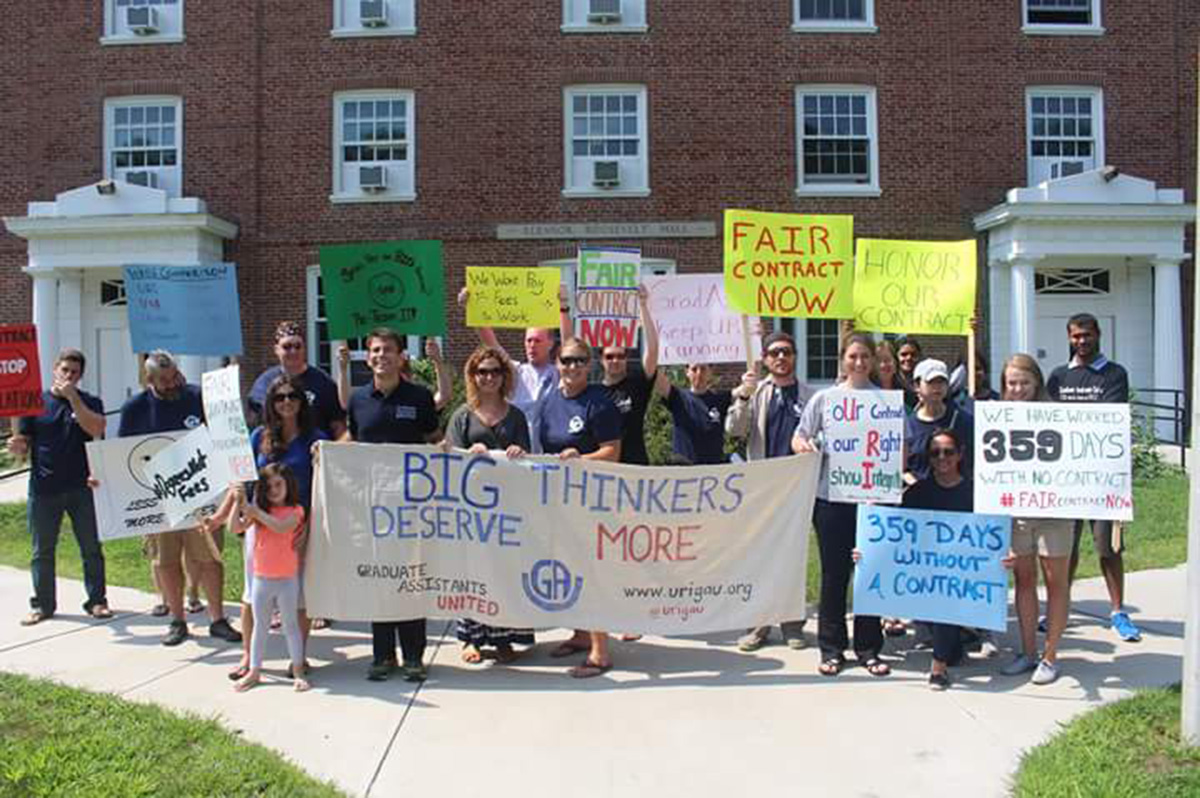
What do we want? Free parking!
What?
Greater City Providence deserves journalistic credit for picking up on a story about graduate student organizing at URI and connecting the dots about how those demands impact environmental planning goals. I wanted to make a specific repost here, as well as add a few thoughts of my own, because I don’t find that the labor world and the environmental world always talk to each other very effectively in Rhode Island (or anywhere, maybe). People who read RI Future, like myself, care about labor organizing and what it portends for a more equal future for all of us at the workplace, but may also be concerned about exactly the points that GCPVD brought to light.
The story: The URI grad students reportedly have asked for a continuation of free parking at URI’s downtown Kingston campus. In an earlier version of this article, I had given information about downtown and Kingston, but in this sentence I accidentally glossed over and left only the word “downtown” during last minute corrections. The union has been clear that its demands relate only to the Kingston campus. I am keeping downtown information here as well for context because I think it’s relevant to URI’s overall parking policy discussion. Apologies for the error! The free parking is of course not really free at all, but costs taxpayers money to subsidize the garages where people park, and policies that subsidize parking warp commute choices towards driving. In addition, URI stands out for having very incomplete and inconvenient transit pass policies. The result is a very easy and cheap drive commute competing with a more cumbersome and expensive transit one, right across the street from Kennedy Plaza. Students at URI Main Campus in Kingston have access to the 66 and 64 buses and an excellent bike path through South County, and could in short order have MBTA service as well. Grad students naturally see the attempts from university officials to charge them for parking as an attack on their already meagre livelihoods, but it’s an ominous sign for the future of Rhode Island if free parking policies continue in such obvious transit-oriented locales.
Where I would add to what Jef Nickerson of GCPVD has said is that I actually think this is a relatively easy issue to resolve, and doesn’t at all have to pit us either against the environment or against unions. The solution here is to charge full price for parking just as the university has proposed, but also credit grad students with that cost as pay which can be used for whatever they like. That would mean that workers who bike or ride the bus effectively get a raise, while everyone else breaks even. Graduate students are right, in my view, to be pointing out the absurdity of their pay hovering around $15,000 a year. It’s just that the solution to that is better pay, not subsidized driving.
Many states, like California, require a parking cash out for workers in certain types of jobs. In California, it’s structured so that only employers who rent parking are required to give the cash out, because it’s assumed that rented parking spots are a liquid asset that can be dropped or maintained by the employer based on parking demand, and that the savings should be passed as part of people’s wages. In URI’s case, the parking that is rented is paid for by the state to the Dunk Center, and so is definitely that kind of liquid asset. In Kingston, as in downtown Providence, the parking situation is absurd. URI has been gradually tearing up more and more of the agricultural land around it to satisfy the needs of its students and faculty to drive instead of finding ways to resolve that through on-campus housing expansion, transit, or biking. Parking cash outs have a positive effect on commute modeshares–increasing carpooling, biking, walking, and transit-use.
It’s not probably well known, but there was a window of my life when I did a lot of labor organizing, and was even a card-carrying union member. The work that the grad students are doing to improve their working conditions is something I support. But an injury to one is an injury to all not just in labor situations, but also for our world as a whole, and it’s the duty of union members to imagine a new world in the shell of the old, not just to make shallow demands about their own needs. This is a time when the grad student union could show real leadership and modify its demands in order to get what it needs for its workers while also respecting the future of our planet.
I dreamt I saw Joe Hill last night,
Driving an S-U-V.
I said to Joe, “our planet’s dying”,
He said, “it’s up to me.”
He said, “it’s up to me.”
~~~~
]]>One of the biggest concerns for the committee was the success of the program, and whether or not RIDOT will actually be able to pay back the $500 million bond they are asking from the state, as well as make good use of the total $1.4 billion to fund the program. Representative Patricia Morgan (R- District 26) has been Rhode Works’ most vocal opponent, wondering why RIDOT cannot repair bridges with its existing funding.
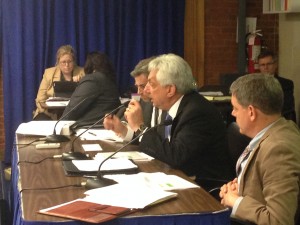
Peter Alviti, the director of RIDOT, said the existing funding they have is not enough to sufficiently repair or reconstruct the 155 bridges that are structurally deficient.
The $500 million bond would pay the expenses for the 17 possible toll locations, leaving that money open for other locations.
“The rest of the money would then have adequate funds to not only reconstruct, but to operate and maintain the facilities,” he said.
Jonathan Wormer, director of the Office of Management and Budget, added that the borrowed money for the initiative would be used to keep bridges from becoming structurally deficient, because they would have the money up front to do so. The goal of the bond is to compress the time in which the bridges can be reconstructed.
“If you don’t fix them at the beginning, it costs them a lot more later,” Wormer said.
The revised version of the bill also contains $13.5 million worth in tax breaks and property rebates for truckers, as well as per day toll caps, which have raised questions about its legality. Some have expressed fear that the tax breaks would discourage interstate commerce, and violate the commerce clause in the United States Constitution. But, RIDOT has asserted that the breaks and tolls are legal.
After nearly three hours of questioning, the Rhode Island Trucking Association, which has opposed the bill from the beginning, brought in American Trucking Association Vice President Bob Pitcher to speak on their behalf.
“We object to the bill before you because of the means it would use to raise the money,” he said. “We believe the proposal would weaken Rhode Island’s economy unnecessarily.”
The biggest objection by Rhode Works opponents is that legislators are rushing into signing it in the last days of session, and possibly overlooking any flaws it might have.
“I’ve never seen anything so vague in a tax law. Tax laws normally say who pays what, and this one does not,” Pitcher continued, adding that Rhode Works is an unprecedented piece of legislation. “No other state has sought to toll multiple state highways or bridges. Because there is literally no experience in such tolling elsewhere, Rhode Island should be doubly cautious.”
In their calculations, RIDOT estimated a 25 percent diversion rate, or that 25 percent of truckers would avoid going through Rhode Island if they were to implement the tolls. Both Alviti and Wormer expressed that this number was very conservative, especially because the plan minimizes the chance for diversions. They also added that only about two percent of trucking companies’ budgets are spent on tolls. Pitcher believes that they have underestimated their diversion rate, in part because tolls don’t exist in large parts of the country.
Many other opponents came forward to testify against the bill, reiterating the worry that the bill has been moving through the State House too fast. In a press release, the Rhode Island Trucking Association called upon Governor Gina Raimondo to create a committee to investigate the bill, rather than push it through at the last minute.
“This process is moving entirely too fast and there have been no discussions or analysis on the fiscal impact of the proposed toll plan to the trucking industry or the business community,” said RITA President Christopher Maxwell.
Other groups have shown support for Rhode Works, including AAA Northeast, The Sierra Club, Grow Smart RI, and Building America’s Future, a national, bipartisan group of elected officials dedicated to infrastructure improvement.
No vote was taken on Monday, but a vote on a version of the bill expected in Senate Finance on Tuesday.
]]>Singling out one industry
The trucking industry has been remarkably successful with a talking point: they say that tolling trucks is “singling out one industry” for a special charge. This raises the hackles of business-oriented members of the Assembly.

The truth of the matter is that truckers are being singled out: for an unusually large subsidy. Director Peter Alviti of RIDOT spoke Monday night for several hours at the Finance Committee meeting, and one of the most important points he made is that trucks cause around 3/4 of the damage on roads, but only pay 19% of the costs of upkeeping them. With new tolls, that number would double, but essentially trucks will still be paying fifty cents to the dollar for the damage they leave behind them.
Some members of the Finance Committee were concerned at what it would mean if trucks decided to circumvent Rhode Island for through-trips. While it’s always smart to think about how a particular tax or fee might be evaded, in this case the worry doesn’t make sense. The truckers are like customers who show up to your lemonade stand: each cup is costing you a dollar to make, but you charge them $0.50 each time. This is a financial loss. You can’t make up that loss on volume, as any fifth grader could tell you. And so the only trucks we should really want in our state (at least at the present toll rates) are those that directly serve our households or businesses. And try as they might, truckers who are coming to directly serve us can’t avoid the tolls.
Fiscally-conservative urbanist blog Strong Towns talks very clearly in this article about why “the real welfare Cadillacs have 18 wheels.”
Why are we bonding for infrastructure?
A serious concern which may be holding up tolls are questions about whether we should be bonding (taking on public debt) to fund infrastructure projects. The tolls raise $700 million plus $200 million for debt service to repay the bonds. Concerns about bonding were raised by left (Rep. Tanzi) and right (Rep. Patricia Morgan), but were generally raised more intensely by conservative members of the Finance Committee.

Director Alviti pointed out that the long-term cost of our bridges falling into disrepair and needing to be completely replaced is much higher than the $200 million in debt service. Of course, said the director, there is a cost to financing these projects. But the overall net effect is a savings for taxpayers. Alviti used a metaphor over and over: fixing a road or bridge now is akin to replacing the broken hinge on a door. Waiting for perfect financing is like letting the door fall off the hinges and break entirely.

I agree with Director Alviti’s metaphor, but would like to expand on it. Debt service to help us fix our projects now is somewhat akin to fixing a hinge, instead of replacing the door. The difference is that in Rhode Island, we have a house that has too many doors.
With 4:7 dollars from the tolls going to capital expenses for the 6/10 Connector, the state should be giving serious consideration to whether we’re overbuilt in our highway system. Already, I’ve been very encouraged (and, frankly, surprised) at the outpouring of bipartisan support for exploring a boulevard on 6/10 to save money. A boulevard would be better for Providence and Cranston neighborhoods, would be better for our environment, but would also greatly reduce costs. This morning, Rep. Patricia Morgan tweeted me to signal her support, joining a consensus that includes West Side Councilman Bryan Principe, UNITE-HERE local 217, Environmental Committee Chair Art B. Handy, Minority Leader Brian C. Newberry, and Rep. Daniel Reilly. You really could not find a more politically diverse group of people who agree on this issue. As Speaker Mattiello explores whether to continue to subsidize the trucking industry, he should address the concerns of fiscal conservatives by including language in the toll bill requiring RIDOT to explore reduction of highway capacity as a cost-saving option.
Contact the Speaker
It needs to be clear to Speaker Mattiello that Rhode Islanders expect him to charge a fair(er) price for truck use of our highways. To not do so is to put the cost on the backs of other road users, and possibly leave our roads in a condition that is embarrassing and unsafe. But Mattiello should address the concerns of fiscal conservatives as well, mandating a reduction of costs by an over-stretched RIDOT.
Fiscal conservatives and environmental/social justice liberals have a budding consensus that part of the problem with our road system is that we’re spending too much money for bad outcomes. Addressing this is a way forward: The Speaker can reduce the overall amount of money needed to be raised, thus lowering tolls. Conservatives will feel that they’ve had a victory. Liberals, too, will be happy. And our state’s infrastructure needs will be addressed in a way that gives all sides part of what they want.
Contact Speaker Mattiello’s office, and email me at transportprovidence@gmail.com or tweet me @transportpvd to let me know that you have.
~~~~
]]>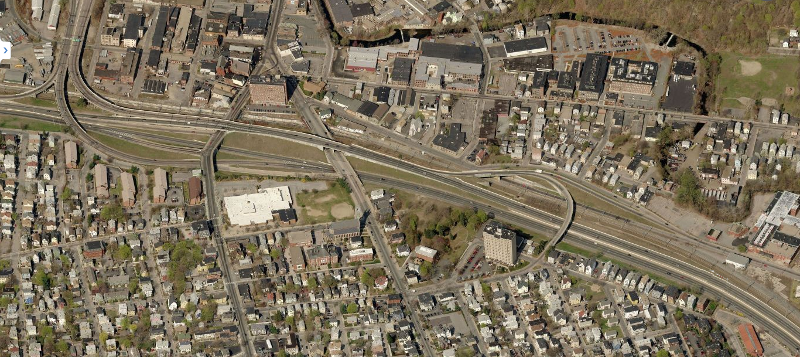
With Governor Raimondo’s recent push for transportation funding, people are talking about patching up the 6/10 Connector vs. replacing it with a boulevard. Best practice in urban design recommends replacing urban highways with boulevards. But that would be something we haven’t done before in Rhode Island, so it’s understandable that some people have concerns. Here are a few questions I thought you might have about updating the 6/10 Connector for the 21st century.
- That’s a big change. Wouldn’t it be expensive to remove the highway?Governor Raimondo is proposing a tractor-trailer toll that would allow the state to bond for $700 million. $400 million of that (plus another $400 million RIDOT wants to get from the Feds) is earmarked for the 6/10 Connector repairs. That is expensive.
Prices vary a lot for building highways, but urban highways with as many overpasses as the 6/10 Connector tend to be on the high end of the scale (and $800 million is quite high). Boulevards (think Memorial Boulevard in Providence, but more multimodal) tend to have a cost roughly ten times lower than an urban highway. Imagine how many structurally-deficient bridges we could make safe with an extra $360-720 million? That’s a very rough cost comparison, but what we can be sure of is that replacing the 6/10 Connector with a boulevard (even tripped out with the best complete streets features you can think of) would cost dramatically less than rebuilding it as a highway.
- So many cars use the connector! Wouldn’t removing it create massive traffic jams?Actually many cities have removed excessive urban highways and seen no marked increase in traffic. There are a couple reasons for this. Traffic is created through a process called “induced demand” where if you build more highways, drivers will use them. Conversely, if you eliminate an urban highway, fewer people will use it as a short-cut.
“But wait!” you say. “I use 6/10 as a shortcut! You want to reduce my transportation options!” Actually, in other cities that remove urban highways, they see the traffic that previously used the highway spread out over the city’s other streets. And there’s less potential for traffic jams when drivers have lots of options. It’s like how bugs congregate around lights on hot summer nights, but out in the dark it’s less buggy. 6/10 is the bug-clogged light, city streets are the cool night air.
And one more thing: our current transportation network overwhelmingly favors driving; it has big highways that cut swaths through neighborhoods that are uninviting to other ways of getting around. Leveling the playing field by making our street system more comfortable for more ways of getting around (RIPTA, walking, and biking as well as driving) gives you more choices and more freedom. Plus, it means more other people are choosing to walk or bike and they’re not clogging up the road in front of you.
- It’ll never happen. We can’t do innovative things in Rhode Island.I mean, this isn’t that innovative. And hey, we started the Industrial Revolution and moved rivers to revitalize downtown Providence. I think we have it in us to make a prudent economic decision to give Rhode Islanders more transportation options and safer bridges.
Plus, you cynics, politicians like ribbon-cuttings and ground-breakings. It’s not as sexy to photo-shoot the replacement of an archaic 1950s-era project as it is to pose for the first complete multi-modal corridor in the State.
We can assume that because the 6/10 Connector is in Raimondo’s investment plan, now is the time that something will happen with it. The state should choose the approach that is best for the neighborhoods adjacent to the corridor, which coincidentally is the option with the best return on investment. Replace the 6/10 Connector with an urban boulevard.
Want to help make this happen? Transport Providence is organizing a walk around the area in question today at 5:15 with Providence City Councilman Bryan Principe. The best thing you can do is to talk to people about this. Which people? Especially your representatives (state, federal, and city if you live in Providence), the Governor’s office, and RIDOT.
]]>The oldest section of the 6/10 Connector, Rt. 10 Huntington Expressway, is the oldest highway in the state, and is mostly redundantly a mirror of I-95. It cuts neighborhoods from each other, lowers property values, takes up developable space, and pukes smog into the air for poor folks to breath. One of our state’s best resources, the Washington Secondary Bike Path, is poorly used because its natural connection to Providence from Cranston is at Cranston Street, where only the boldest ride their bikes under the highway through thick, multi-lane traffic jams.
Read: Why Should We Remove Rt. 6/10?
Read: RIDOT Director Alviti Promises 6/10 Bus Lanes: Why Are They a Bad Idea?
Read: Providence is in the Top Ten for Lane-Miles Per Capita of Highway
But forget all that. Here are some places that used to be highways in other parts of the world. If pictures can’t convince you, then what can?
Seoul, South Korea
Used to be a(n American-built) highway. This is one of several that have been removed.

Portland, Oregon
Used to be a highway. The on- and off-ramps for the Harbor Drive highway now serve a bike path.
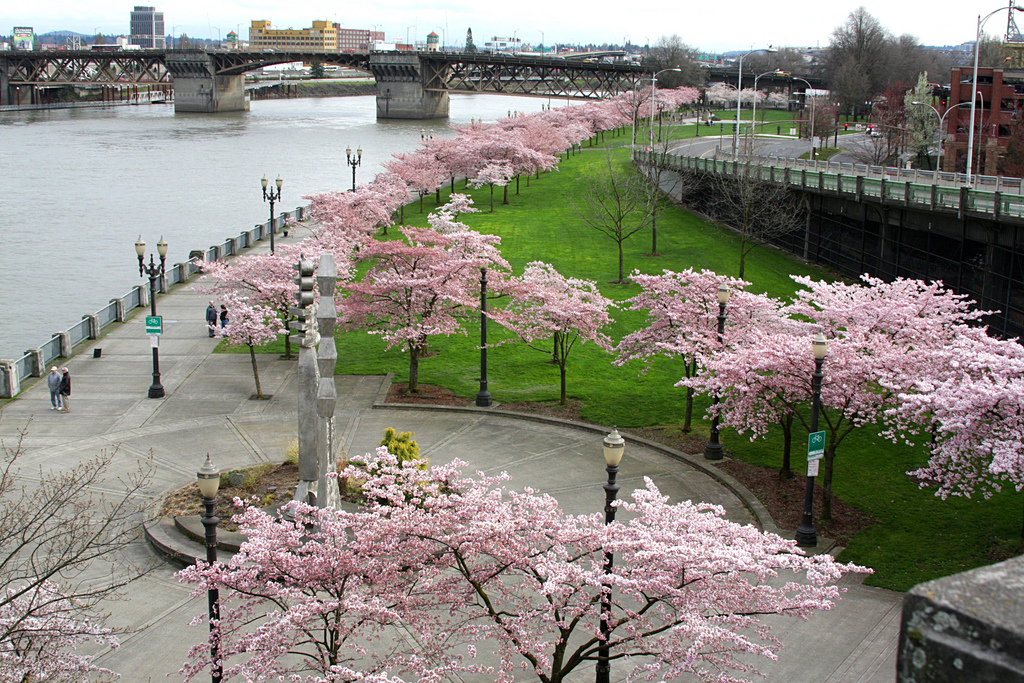
San Francisco
Used to be a highway. There was no access to this old ferry building when the Embarcadero stood. Luckily an earthquake took it down, and the people of San Francisco decided it wasn’t worth replacing it.

Milwaukee
The Park East Freeway–not there anymore. Removed.
Chattanooga, Tennessee
Used to be this: limited access.

Now it’s this: complete streets.

Memphis
Before.

After:
Jamaica Plain, Forest Hills
I-95, proposed:

Almost happened:

Stopped:

Dallas
Rt. 345. What it is:

What it could be: lots of development land, right next to downtown.

New York City
West Side Highway. Before:

After:

Philadelphia:
(Never happened, South Street)
Proposed:

What it would’ve taken:

Isaiah Zagar helped fight that highway. Here’s his Magic Garden.

Providence
How it was: (Oh yeah! We did that!)
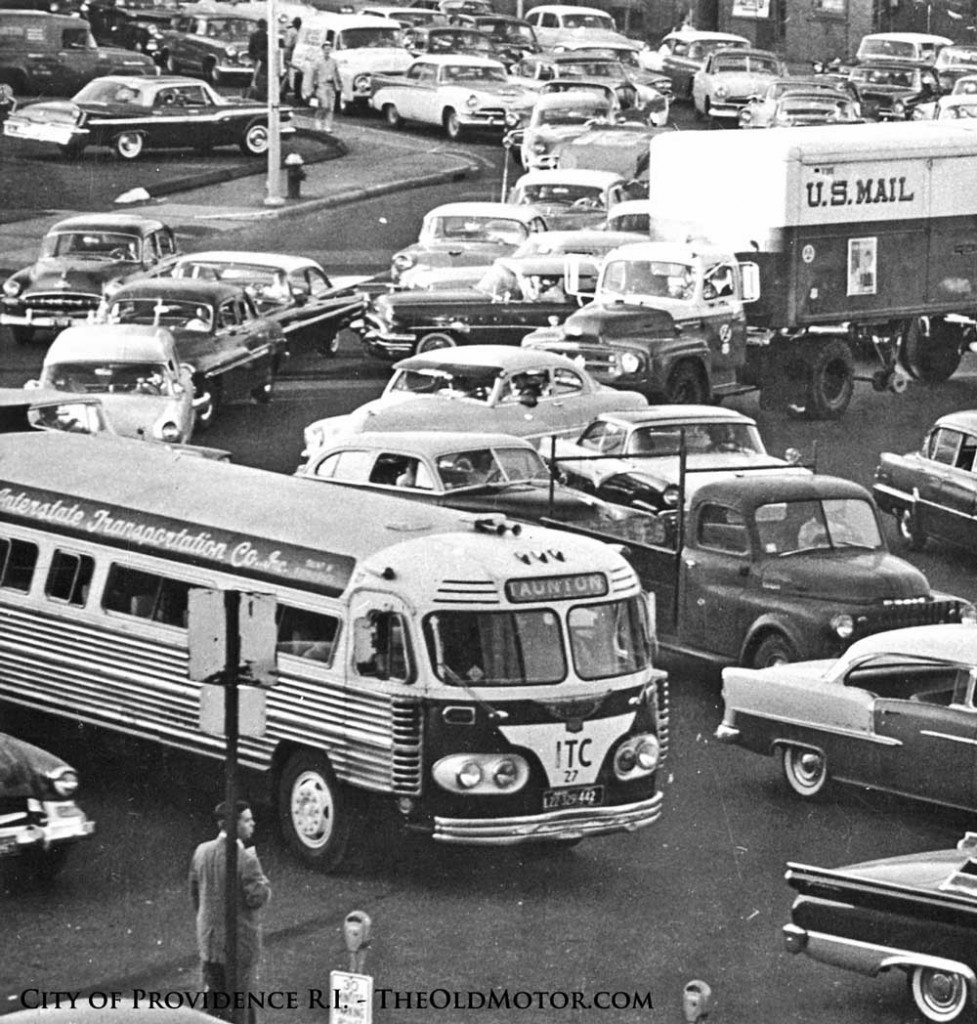
How it is:

Olneyville
How it was:
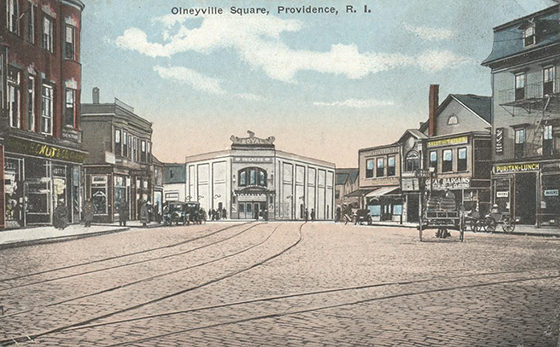
How it is:

Call your reps, state senators, and other officials, and let them know what should be done with the 6/10 Connector. No urban place has ever been made better by a highway. Every urban place that has removed a highway has flourished. It doesn’t make sense to spend so much money on something that will make our city worse. It’s a no-brainer.
~~~~
]]>
Providence Mayor Jorge Elorza says he hasn’t broken a campaign promise to provide bus passes for local students who live more than two miles from school. He just hasn’t made good on it yet.
“I remain committed to reducing the walk-to-school radius and fixing the school assignment process so fewer students are facing long commutes,” Elorza said in a statement. “I have walked with these kids, I understand the difficulty they face, and I look forward to working together to address this issue.”
The Providence Student Union and other local high school students held a rally at City Hall Tuesday to hold Mayor Elorza accountable for a campaign pledge he made to provide bus passes for students who live more than 2 miles from school.
“This is a matter of priorities, not cash,” Elorza said in February, according to to RI Future, when he was first running for office.
But now that he is mayor, it seems to have become a matter of cash. The roughly $1 million expenditure to expand the number of students who get bus passes for their school commute was not included in his budget. As a candidate, Elorza said, “With a total city budget of $662 million, we must make it a priority to find the $1.35 million to fund passes for the 2,100 students who live between 2 and 3 miles from school.”
Elorza spokesman Evan England said today, “It’s not something we don’t want to do. There are a lot of difficult decisions right now.”
England added, “It’s not necessarily off the table for next school year,” noting the mayor may approach RIPTA about partnering on the costs, and looks forward to meeting with PSU members to talk about other potential solutions.
But when asked if the issue was an imperative to solve before next school year, England said, “I don’t know. I know it’s something the mayor feels very strongly about and something he wants to see get done.”
Most Rhode Island and many regional urban school districts provide public transportation to school when students live greater than two miles from school, according to this RI Future post. Providence provides public transportation when students live greater than 2.5 miles from school, reduced from 3 miles in September.
“Last year, a clear and simple promise was made by the City, the School Department and most of all by then-candidate for mayor Jorge Elorza to set this issue right,” said PSU member Roselin Trinidad, a senior at Central High School, in a statement about the group’s rally yesterday at City Hall. “Mayor Elorza pledged that the City would put money in next year’s budget to lower the walking distance for Providence high school students down to 2 miles. Yet his proposed budget does not direct a single dollar toward keeping this promise. It is unacceptable for Mayor Elorza to value our ability to access education before an election, but not after, and we will not quiet down until this wrong has been righted.”
Said PSU member Diane Gonzalez, a junior at Central High, “I am here today because I live 2.4 miles away from my school. That means I don’t qualify for a free monthly bus pass. My family cannot afford to spare $60 each month for a pass, so I have to walk halfway across the city every single day just to get to school, and then back again to get home. While that walk can be a pain in any weather, it can be downright dangerous when the poorly plowed streets are covered in ice or when the temperature hits 95 degrees. That’s why I hope Mayor Elorza is listening, and why I plan to come back here every day until he does.”
PSU created this video (which utilizes RI Future footage of Elorza pledging to address the situation) to draw attention to the matter.
Update: the original version of this post said Providence provides school busing at 3 miles. Last year, the city reduced that to 2.5 miles. The post was corrected.
]]>And couldn’t wait to make the scene
Behind the wheel of your own car
Driving made you a superstar
But freedom on the open road
Was cut short as the traffic slowed
“A sign of progress” experts said
Congestion means full steam ahead
Remember your first airline seat
Runway rumble beneath your feet
The look of wonder in your eyes
As you wing through the friendly skies
Then flying lost some altitude
Lines got long, they stopped serving food
Like sardines in a sardine can
Congestion is their business plan
Remember your first railroad ride
The panorama countryside
Rambling by on iron wheels
The club car waiter serving meals
And then one day the train was new
More frequency and comfort too
But most of all it was faster
Racing to its own disaster
Traveling is a right they missed
On our Constitutional list
We need to get from here to there
By means that aren’t a double-dare
Drive a car and the road could sink
Is your pilot seeing a shrink?
Washington, invest the dough
Make America GOOD TO GO.
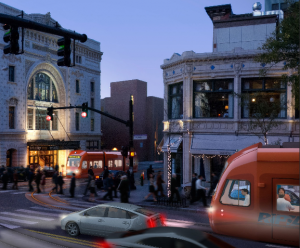 I have many points of agreement with Barry Schiller’s post on a potential Providence streetcar, but my disagreements are serious enough to be worth writing about.
I have many points of agreement with Barry Schiller’s post on a potential Providence streetcar, but my disagreements are serious enough to be worth writing about.
Barry is right to raise concern about whether the Providence streetcar is the best use of our funds. Streetcars do cost more than buses, and they don’t necessarily upgrade service. The main features that make transit better–a train or bus having its own right-of-way, having signal priority, having an off-board payment system, all-door-boarding, and frequent service–may or may not be present with rail. Many Americans express a strong preference for rail because oftentimes the rail options they’re familiar with have these features, while the bus lines they’ve been on usually have not.
A subway in New York, for instance, has its own tracks, and never gets caught in traffic. Trolleys in the Philadelphia suburbs (and I believe many of the Green Line Ts in Boston) control intersections, so that when they come to a crossing the cars have to stop and they proceed. When you pay to get on a subway or some stops of a trolley, you often will pay through a turnstile, so that when the vehicle arrives you can just get on (using all doors). There are even upgrades that can happen to subways along these lines. The frequent problem of passengers bunching up on the middle cars of a subway is now being solved by putting stretchy accordion-like connections between the cars so that passengers can spread out and reduce boarding delays.
The Providence streetcar, as currently planned, currently has none of these features (If you need convincing still on why it should have them, read this “Dissent of the Week” in Human Transit, about the Washington, D.C. trolleys).
I have criticized the streetcar, but I am currently a proponent of moving forward on it. There are several reasons for this:
 Our time is better spent fighting for good service features than fighting whether or not to have a streetcar. While there are many really bright transit-supporters who have legitimate complaints about the Providence streetcar, many of the people who are against streetcars are fighting them for totally different reasons than Barry (or me).
Our time is better spent fighting for good service features than fighting whether or not to have a streetcar. While there are many really bright transit-supporters who have legitimate complaints about the Providence streetcar, many of the people who are against streetcars are fighting them for totally different reasons than Barry (or me).
The right has long proposed busing as a way to supplant the greater costs of rail projects, but when cities have recently attempted to take them up on it by building quality BRT routes, the Koch Brothers have banded together with state governments to stand in the way of city planners in cities like Nashville, Tennessee. I’m concerned that we’ll have a pyrrhic victory if we block the streetcar, because it won’t necessarily mean that we’re going to get the money that was for the Streetcar given to us for buses instead. We can grow the strength of smart critics while giving no quarter to anti-transit folks by supporting the streetcar, and simply demanding better service patterns as part of it. We shouldn’t be passive about this–we need to fight! But let’s pick our battles.
Short routes in dense areas are okay. One big criticism of the streetcar you hear is that it’s not long enough. I don’t agree with this one. The comprehensiveness of our transit system is definitely a problem, but it’s not because of length of routes. In fact, Rhode Island has a tendency to run infrequent “coverage” routes to places where they can’t reasonably pick up large riderships, and often those routes connect from parking lot to parking lot in highly un-walkable, sprawly areas. I’m not even talking about little villages or whatnot, which I think should get transit because of their walkability even though they have low population counts. I’m talking about routes like the 54 that loop through multiple parking lots off of highway exit ramps, and as a result are bad connectors between their main urban locations–Providence and Woonsocket (RIPTA addressed the long travel time of the 54 by removing the urban stops along Charles St. and making them a separate route, the 51, but kept the suburban Tour-de-Parking-Lot stops, which just makes me smack my face with my palm every time). A short PVD Streetcar is not perfect. It should go from Central Falls (or at least Pawtucket) to the Cranston border. But the area that was chosen is a dense and walkable area with many trips that need to be covered. In fact, I think the choice to shorten the route and run it north-south between the Upper South Side and the T station is a great idea, because it makes more sense in the long-term to route a PVD Streetcar up N. Main and down through the S. Side and update the R-Line, with a separate route pulling east-west duty from Olneyville to East Providence). Pro-car thinkers (and even a lot of very earnest transit supporters look at a map and see the length of lines), but what matters is the frequency of those lines, not their length.
 Streetcars are not the most expensive transportation choice we have. I agree, in principle, and spent quite a long time talking about the fact that Bus Rapid Transit is a better investment idea than the streetcar, and I know that Barry agrees. But I also know that Barry will agree with me that the streetcar is certainly not the most expensive transportation option we have. The 6/10 Connector, for instance, won’t cost $100 million, but $500 million, and unlike the streetcar–the worst of which I think can be said that it will provide mediocre service–the 6/10 Connector will pull neighborhoods apart and absolutely get in the way of sustainable development. The 6/10 Connector is small potatoes compared to some of the highway-oriented crap that gets built around the country, but it actually costs the same as the entire TIGER grant program for the whole United States. So given the fact that RIDOT may imminently decide to throw a bond issue out, or grasp for federal money, in order to rebuild 6/10, I think our time is better spent fighting that abysmal attack on our landscape than trying to stop a mediocre project.
Streetcars are not the most expensive transportation choice we have. I agree, in principle, and spent quite a long time talking about the fact that Bus Rapid Transit is a better investment idea than the streetcar, and I know that Barry agrees. But I also know that Barry will agree with me that the streetcar is certainly not the most expensive transportation option we have. The 6/10 Connector, for instance, won’t cost $100 million, but $500 million, and unlike the streetcar–the worst of which I think can be said that it will provide mediocre service–the 6/10 Connector will pull neighborhoods apart and absolutely get in the way of sustainable development. The 6/10 Connector is small potatoes compared to some of the highway-oriented crap that gets built around the country, but it actually costs the same as the entire TIGER grant program for the whole United States. So given the fact that RIDOT may imminently decide to throw a bond issue out, or grasp for federal money, in order to rebuild 6/10, I think our time is better spent fighting that abysmal attack on our landscape than trying to stop a mediocre project.
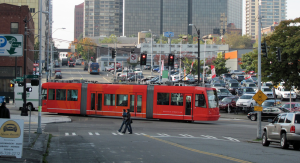
It can get better. A lot of cities have tried streetcars in part because of the Obama administration’s efforts to kick-start them through the TIGER grant program (which also pays for biking and walking improvements), and some of those streetcars have done quite poorly. One such example was Seattle, which built several of them, and saw ridership goals unmet. The Seattle streetcars were sitting in mixed traffic, getting caught at lights, waiting for people to pay with dollar bills at the door, and just generally sucking in every way that a bus does. So Seattle is now working to change the streetcars so that they have rights-of-way, signal priority, and all-door boarding so that they can be highly efficient transit. Providence should build these features into the PVD Streetcar now, but even if it doesn’t we can make the city do it later.
Remember, the Streetcar has a lot wrong with it. But we can make it better. And most importantly, we have bigger fish to fry.
~~~~
]]>